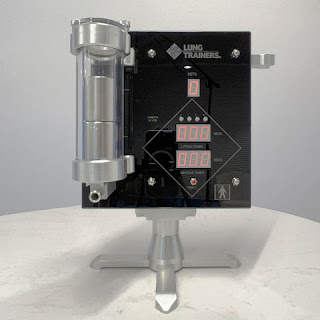Breathing Running Tips - How Do You Get Faster
The ideal way to breathe while jogging is to use both your nose and mouth to inhale and exhale. Breathing through your mouth and nose will keep your breathing steady and activate your diaphragm, allowing you to take in the most oxygen. It also permits you to exhale carbon dioxide quickly. If I wanted to have more energy and play to my full ability, I'd have to figure out how to breathe in this oppressive humidity, which felt like stepping into a pool when you stepped outside. So, guess what I did? I did the same thing as everyone else. I Googled how to breathe during exercise, and I found some information that helped me dramatically.

It was talking about how inhaling through your nose will boost your performance by a hundred! I started by going over the history of nose breathing, from how it came to be one of the most fundamental aspects of yoga and relaxation. It described how racehorses are forced to breathe through their noses during training. First, let's talk about the yoga component. You must grasp this crucial point: your nose was designed to allow you to breathe. Your mouth was not; obviously, you can breathe via your mouth, but note how you get a sore throat every time you sleep with your mouth open in the morning.
This is because your mouth has very little protection against everything hazardous in the air. Cilia in your nose are small hairs that protect you from dangerous substances in the air. You're also educating your mind and body to hyperventilate when you breathe through your mouth. In any situation, that cannot be good. You can fill your lungs up to 70% more when you breathe via your nose. Nose breathing also assists you in going longer and faster by automatically slowing down your pulse rate. That is crucial to achieving better levels of performance. To outperform exceptional athletes, your heart rate must remain low while you have more air and energy.
Do you appear to get hurt on one side of your body all the time? Learning to synchronize your breathing pattern to your cadence will help you avoid injuries and improve running performance. The number of steps you take on inhale and exhale is called rhythmic breathing, also known as cadence breathing. Like most runners, you're used to having an even number of foot strikes on each inhale and exhale.
For example, in a 2:2 breathing rhythm, you inhale every two steps and exhale every two steps. Because the exhale is constantly on the same foot, this even breathing rhythm might lead to injury. Instead, try concentrating on a breathing pattern that alternates between sides. Take, for example, a 2:1 breathing rhythm, in which you inhale twice and exhale once. This alternate rhythm will help you maintain core stability and avoid injury.
Warming up your diaphragm before running at your normal pace might help you avoid obtaining this irritating side stitch. To relax your diaphragm muscle, begin by practicing your deep belly breathing technique. After that, start slowly and concentrate on maintaining your breathing trainers help you to Increase your speed gradually to allow your diaphragm to acclimate to stronger breathing. This will warm up your entire body, allowing you to run without stitching. On your next run, fasten your gear with a secure running belt.
Source Url :- https://lungtrainers.com/pages/top-5-exercises-to-improve-your-lung-capacity

Comments
Post a Comment